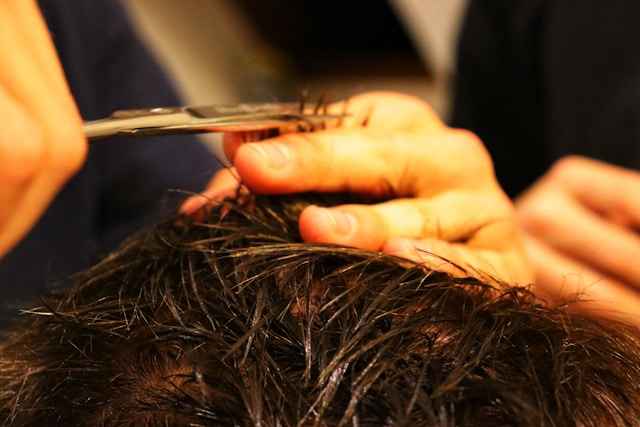Head Lice (Ina): Causes, Symptoms, Treatment, and Prevention
Head lice, locally called “Ina” in many Nigerian languages, are tiny insects that live on the human scalp and hair. Despite being small, they can cause significant discomfort and social stress. This article explores everything you need to know about head lice: how they spread, symptoms, health risks, treatment, and how to prevent them from returning.
What Are Head Lice?
Head lice (scientific name: Pediculus humanus capitis) are small, wingless insects about the size of a sesame seed. They live on the human scalp and feed on tiny amounts of blood. Many people mistakenly think lice are ants, but they are entirely different species.
Head lice are common worldwide and affect people of all ages, genders, and cleanliness levels. Having lice is not a sign of poor hygiene.
How Do Head Lice Spread?
Head lice spread mainly through:
- Head-to-head contact: The most common way. Lice crawl from one person’s hair to another during hugging, playing, or sitting close together.
- Sharing personal items: Lice can sometimes spread through shared combs, brushes, hats, scarves, hair ties, pillows, or towels.
- Close living environments: Lice spread easily in schools, dormitories, and crowded homes where people are often close together.
It’s important to know that lice do not jump or fly. They only crawl, so close contact is needed for them to move from person to person.
Can Males Get Head Lice?
Yes! Males can definitely have head lice just like females. Lice don’t care whether the host is male or female. However, shorter hair in males sometimes makes lice slightly less common because there’s less hair for them to cling to. But even men and boys with short hair can still get lice.
Signs and Symptoms of Head Lice
Wondering how to know if you have head lice? Look for these signs:
- Itching: The most common symptom. Lice bites and saliva cause scalp irritation and itching.
- Crawling sensation: Some people feel something moving in their hair.
- Red bumps or sores: Excessive scratching can cause sores that may become infected.
- Trouble sleeping: Lice are more active at night, making itching worse.
- Visible lice or nits: The clearest sign. You may see:
- Adult lice – small, brownish or grey insects crawling quickly on the scalp.
- Nits (lice eggs) – tiny white or yellow oval-shaped eggs stuck firmly to hair strands near the scalp, especially behind the ears or at the back of the neck.
White flakes that brush off easily are usually dandruff, not lice eggs. Nits are glued tightly to hair and don’t come off easily.
Health Risks of Head Lice
While head lice are not dangerous in terms of spreading deadly diseases, they can cause:
- Severe itching and discomfort
- Scratches that can lead to skin infections
- Difficulty sleeping
- Emotional stress, embarrassment, and social stigma
It’s important to note that lice do not spread serious diseases like HIV or malaria. Anyone can get lice, regardless of how clean they are.
How Do Head Lice Reproduce?
Head lice reproduce quickly, which is why infestations can grow fast if untreated:
- Female lice lay around 6–10 eggs per day.
- Eggs hatch into tiny lice called nymphs in about 7–10 days.
- Nymphs mature into adult lice within another 9–12 days and begin laying eggs themselves.
This rapid cycle means even a few lice can become a large problem in just weeks.
How to Get Rid of Head Lice
Fortunately, head lice can be treated and eliminated. Here’s how:
1. Use Medicated Lice Treatments
Over-the-counter lice shampoos and lotions (called pediculicides) are effective, such as:
- Permethrin cream rinse (1%)
- Malathion lotion
- Dimethicone lotion
How to Use: Follow the instructions exactly. Usually, you apply the product to hair, leave it on for the recommended time, rinse, and repeat after 7–10 days to kill newly hatched lice.
2. Comb Out Lice and Nits
Use a fine-tooth lice comb on wet hair. Comb small sections from scalp to tip, wiping the comb on a tissue after each pass. Repeat every few days for at least two weeks to ensure all lice and eggs are gone.
3. Wash Personal Items
Wash bedding, pillowcases, hats, scarves, and towels in hot water (at least 60°C). Items that can’t be washed should be sealed in a plastic bag for 2 weeks to kill lice.
4. Avoid Sharing Personal Items
Don’t share combs, hats, scarves, or hair accessories to prevent spreading lice.
5. Check Family Members
Examine all close contacts and family members. Treat only those with lice.
Natural Remedies: Be Cautious
Home remedies like mayonnaise, vinegar, or coconut oil may help suffocate lice but aren’t always reliable. Medicated treatments work better and faster.
Important Myths About Head Lice
- Lice cannot jump or fly—they only crawl.
- Having lice does not mean someone is dirty or unclean.
- It’s not always necessary to shave your head unless the infestation is severe.
With proper treatment and prevention, lice can be eliminated effectively.
Explore More on:
Also Read on:
Dealing with head lice can be stressful, but remember, it’s a common and treatable problem. Stay informed, act quickly, and protect yourself and your loved ones from infestation.

